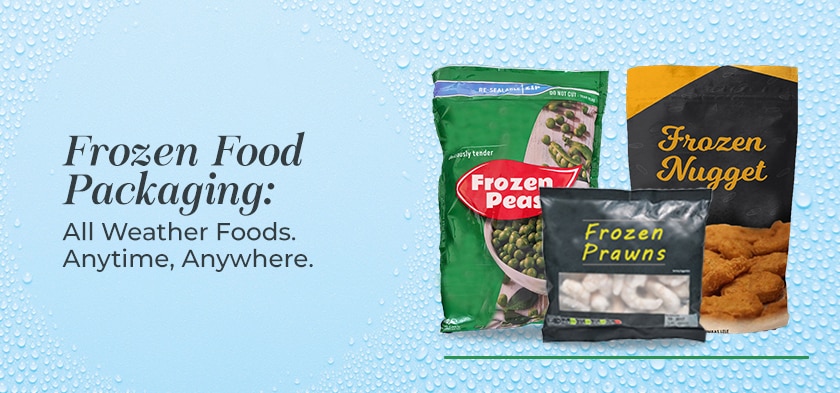Frozen foods give people a chance to have healthy meals within minutes. Frozen foods comprise of any of the complete meals or portions of meals that could be raw or partially cooked and assembled into a package and frozen for retail sale. With the growing use of microwaves worldwide, cooking preferences in households and change in eating habits of millennials the demand and consumption of frozen food is growing worldwide. This coupled with the pandemic has also added a spurt as people resorted to working from home and wanted a quick fix for their meals.
The founder of frozen food industry, Clarence Birdseye pioneered methods for quickly freezing meals in the 1920s, which was the inception of frozen food packaging. Since then the frozen food segment has undergone a sea change, including changes in packaging styles and raw materials. A majority of the changes in packaging for frozen foods have been fuelled by the need for convenience, on-the-go eating habits of consumers, need for high barrier properties and need for microwave-friendly packaging.
Astudy by Mordor Intelligence valued frozen food market at USD 43.5 million in 2020. The study also indicates the segment to reach USD 56.2 million by the end of 2026 at a CAGR of 5.18%. Frozen food market is segmented into three major aspects 1) Type of Food Product that includes Fruits and Vegetables, Meat, and Sea Food, Frozen Desserts and Ice Creams, Baked Goods, 2) type of Packaging that ranges from bags, boxes, bubs and cups, trays, wrappers, pouches, and 3) Geographical location.
Over the years frozen food packaging alternatives have evolved from cardboard, metal cans, paperboard, wax coated paper,etc. as these are easy to store and seal and can resist grease, oil, and water. With growing concerns over food hygiene, sustainability and packaging structures, packaging industries have also elevated their game. In the quest for improved packaging with better barrier properties, enhanced aesthetics, and functional & convenience aspects like reusability, re-closability and easy storage, brands and packaging converters are working on innovations that fit the bill of consumer convenience, business goals and environmental protocols. It is interesting to take note of trends in the frozen food segment.
Consumer Convenience and Reduction in Food Wastage
Consumers rely on frozen food options to offer variety to their meals while also reducing the hassle of cooking. Frozen food options not just help save time but also help reduction of food wastage as it can be preserved for a longer duration and saves it from ending up in landfills.
Improved Sustainability:
Sustainability in food packaging has gained worldwide attention. With rising plastic waste in landfills and ocean beds, the need for sustainable materials in manufacturing packaging has become the need of the hour. With rising cognizance among consumers, sustainability goals of brands and statutory protocols the need for sustainable packaging solutions get further push. It is interesting to see brands and packaging converters switching to the use of mono-materials in the development of packaging for frozen foods as well.
Versatile Adhesives:
As the frozen food industry continues to experience steady growth, cold food packaging is following the suit. New cold food packaging trends are continually emerging—with the most recent and biggest being packaging that improves the quality, health and integrity of cold food products.One of the key components in delivering an improved product experience is the packaging that should be visually appealing and properly sealed as the pack is placed in freezers. This triggers the need for finding the right adhesive that works well with a wide variety of end-use temperatures can help avoid the need for multiple adhesives. Therefore, adhesives with strong tack and grab are utilized to prevent packaging failures and increase performance. These adhesives promote sustainability by providing adherence to recyclable surfaces without requiring larger coat weights.
The pandemic outbreak propelled the growth of frozen food segment on account of convenience to cook, hygiene concerns and longer shelf-life. The post-pandemic era will witness further push in the frozen-food segment as indulgent foods items (such as cakes, ice-creams, candies, rolls etc.) will make their way to becoming consumer preference. The flexible packaging business of UFlex has pioneered the art of frozen food packaging for a long time for a large number of food brands. With sustainable materials and convenience-driven packaging gaining attention, UFlex is committed to innovating solutions that simplify the lives of its consumers while promoting environmental wellness. With value-added green packaging solutions, UFlex is keen to help brands step closer to their business and sustainability goals and continue to touch lives every day!




